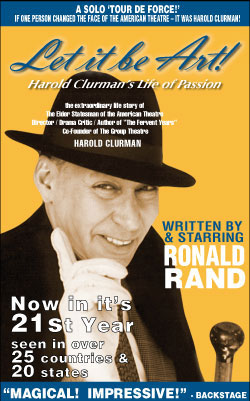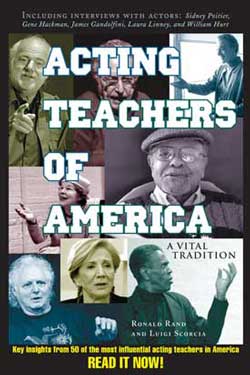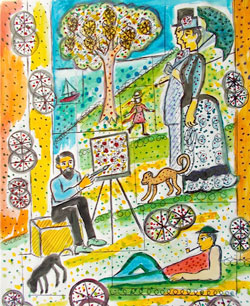Stephanie Chase
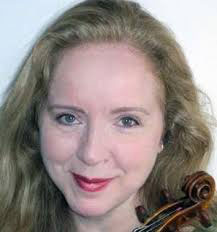 Is recognized as “one of the violin greats of our era.” Her upcoming engagements: Rice University, Aberdeen University, with the San Jose Chamber Orchestra, Music of the Spheres Society, the Dallas Chamber Music Society, and the South Arkansas Symphony Orchestra. As a soloist she recently played at the Cape Cod Music Festival for a program remembering Samuel Sanders, American Classical Orchestra, and the Louisville Orchestra. Ms. Chase is the Artistic Director of the Music of the Spheres Society. She gave her first New York recital with pianist Sara Davis Buechner. Her triumphant performances at the Tchaikovsky Competition in Moscow led to concerts throughout the world and the award of the prestigious Avery Fisher Career Grant. As soloist, Ms. Chase has performed in twenty-five countries and offers an enterprising repertoire of over 50 concertos. She has collaborated with conductors that include Zubin Mehta, Leonard Slatkin, Leon Barzin, Herbert Blomstedt, Frans Brüggen, Marin Alsop, Roy Goodman, Hugh Wolff and Stanislaw Skrowaczewski. Her discography encompasses major concerti, chamber works, and collections of salon pieces by diverse composers including Beethoven, Mozart, Saint-Saëns, Ravel, Friml, Schoenberg, and Kapralova, and she has premiered music by composers that include Earl Kim, Edward Applebaum, Eleanor Hovda, Joan Tower, Yehudi Wyner and Taavo Virkhaus. In October 2011 she gave the North American concert premiere of Niccolò Paganini's “Sonata for Violin Solo MS 83,”which he composed at age 17 (at the time that he was given his famed “Cannon” Guarneri de Gesù violin following a concert in Livorno.) Ms. Chase has also given master classes many prestigious institutions including Juilliard, Southern Methodist University, Mannes, San Francisco Conservatory, University of Texas at Austin, Shepherd School at Rice University, and Milwaukee Conservatory. Ms. Chase is also a specialist in period instrument practice and actively performs on both types of violins. Her recording of Beethoven’s “Violin Concerto and Romances,” the first ever on period instruments, has been declared “one of the twenty most outstanding performances in the work’s recording history” (and honored with the highest possible ratings by “BBC Music Magazine” and “Classic CD.” She has composed her own cadenzas for Beethoven’s “Concerto” as well as for concerti by Haydn and Mozart. In 2001, with Ann Ellsworth, she created the Music of the Spheres Society, inspired by the Neo-Platonic academies of 16th and 17th-century Italy, combining discourse with musical presentations. Their mission is to promote classical music through innovative chamber music concerts and pre-concert lectures which illuminate music’s historical, philosophical and scientific foundations, in order to give greater context for music to the average audience member. The Society’s performing artists are renowned soloists and chamber musicians, many of whom also specialize in historic instrument practices or contemporary music. Guest artists have included Jon Nakamatsu, gold medalist of the Van Cliburn Piano Competition, Augustin Hadelich, gold medalist of the Indianapolis Violin Competition, pianists William Wolfram and Sara Davis Buechner and cellist Bion Tsang, all of whom are medalists of the International Tchaikovsky Competition. Their programs explore the contexts of music through programming themes and program notes and include chamber music master-pieces, lesser-known works, and world or U.S. premieres. The 2014-2015 season marks their 14th year of presenting concerts and lectures in New York City. www.stephaniechase.com, www.musicofthespheressociety.org
Is recognized as “one of the violin greats of our era.” Her upcoming engagements: Rice University, Aberdeen University, with the San Jose Chamber Orchestra, Music of the Spheres Society, the Dallas Chamber Music Society, and the South Arkansas Symphony Orchestra. As a soloist she recently played at the Cape Cod Music Festival for a program remembering Samuel Sanders, American Classical Orchestra, and the Louisville Orchestra. Ms. Chase is the Artistic Director of the Music of the Spheres Society. She gave her first New York recital with pianist Sara Davis Buechner. Her triumphant performances at the Tchaikovsky Competition in Moscow led to concerts throughout the world and the award of the prestigious Avery Fisher Career Grant. As soloist, Ms. Chase has performed in twenty-five countries and offers an enterprising repertoire of over 50 concertos. She has collaborated with conductors that include Zubin Mehta, Leonard Slatkin, Leon Barzin, Herbert Blomstedt, Frans Brüggen, Marin Alsop, Roy Goodman, Hugh Wolff and Stanislaw Skrowaczewski. Her discography encompasses major concerti, chamber works, and collections of salon pieces by diverse composers including Beethoven, Mozart, Saint-Saëns, Ravel, Friml, Schoenberg, and Kapralova, and she has premiered music by composers that include Earl Kim, Edward Applebaum, Eleanor Hovda, Joan Tower, Yehudi Wyner and Taavo Virkhaus. In October 2011 she gave the North American concert premiere of Niccolò Paganini's “Sonata for Violin Solo MS 83,”which he composed at age 17 (at the time that he was given his famed “Cannon” Guarneri de Gesù violin following a concert in Livorno.) Ms. Chase has also given master classes many prestigious institutions including Juilliard, Southern Methodist University, Mannes, San Francisco Conservatory, University of Texas at Austin, Shepherd School at Rice University, and Milwaukee Conservatory. Ms. Chase is also a specialist in period instrument practice and actively performs on both types of violins. Her recording of Beethoven’s “Violin Concerto and Romances,” the first ever on period instruments, has been declared “one of the twenty most outstanding performances in the work’s recording history” (and honored with the highest possible ratings by “BBC Music Magazine” and “Classic CD.” She has composed her own cadenzas for Beethoven’s “Concerto” as well as for concerti by Haydn and Mozart. In 2001, with Ann Ellsworth, she created the Music of the Spheres Society, inspired by the Neo-Platonic academies of 16th and 17th-century Italy, combining discourse with musical presentations. Their mission is to promote classical music through innovative chamber music concerts and pre-concert lectures which illuminate music’s historical, philosophical and scientific foundations, in order to give greater context for music to the average audience member. The Society’s performing artists are renowned soloists and chamber musicians, many of whom also specialize in historic instrument practices or contemporary music. Guest artists have included Jon Nakamatsu, gold medalist of the Van Cliburn Piano Competition, Augustin Hadelich, gold medalist of the Indianapolis Violin Competition, pianists William Wolfram and Sara Davis Buechner and cellist Bion Tsang, all of whom are medalists of the International Tchaikovsky Competition. Their programs explore the contexts of music through programming themes and program notes and include chamber music master-pieces, lesser-known works, and world or U.S. premieres. The 2014-2015 season marks their 14th year of presenting concerts and lectures in New York City. www.stephaniechase.com, www.musicofthespheressociety.org
I understand you grew up in a family of musicians as the daughter of two musicians: the noted arranger and composer, Bruce Chase, and violinist Fannie (Paschell) Chase, and the granddaughter of violinists.
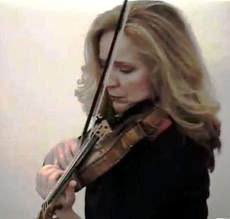 I was under two years of age when I started playing. I think the fact my sisters were playing, it made me want to do it. I was attracted because of the sound and the physicality. At that age, I thought it was something you put between your arms and make a sound.
I was under two years of age when I started playing. I think the fact my sisters were playing, it made me want to do it. I was attracted because of the sound and the physicality. At that age, I thought it was something you put between your arms and make a sound.
My father also played the piano, and the activity of also making that kind of a sound, with it all, I recognized a certain flow.
When I play for very small children I notice they have an instinctive reaction to the violin and the piano. There’s a very genuine response; it was probably like that for me. Kids are instinctively attracted to the violin, and the art that comes out of it is as clear as the sky is blue. There’s something innately wonderful about it.
You were six years of age when you appeared on the “Ted Mack Original Amateur Hour” show. At age nine you made your debut with the Chicago Symphony as the youngest winner ever of the orchestra’s Youth Competition, and you even played with Jack Benny.
Yes, we went to Jack Benny’s hotel suite in the Ballroom House and he wanted me to play for him; I was aware he was a violinist. My father liked Jack Benny. I played some of the Mozart concerto, which I had won the competition with. Jack Benny took out his violin, and we played together. He played on his Stradivari violin; it was the first Stradivari I had ever seen. He had a loose bow arm but he took the violin quite seriously. He used it for humor, but he had actually studied quite seriously.
I had enormous skill, and Jack Benny had asked if I’d be interested in playing on his show, and coming out to California with him. I could have had a whole different career, but both my parents said: “No.” I was a kid and they didn’t want me to do that. My mother recognized I was going to study seriously, they both recognized it. I think it could have been very exciting to go play with Jack Benny on his show.
You then followed with a very concentrated period of study and performances.
My parents read about a man who was called the greatest violin teacher of his time, Ivan Galamian. Accompanied by my mother, I traveled to New York and played for him and his principal assistant, Sally Thomas. I distinctly recall being unable to decipher much of what he was saying. Galamian was born in Persia, raised in Russia, and lived in France for fifteen years before coming to America, and this contributed to a thick fog of accents. He recommended that I work with Sally for a while before coming to him. I wound up studying with her for ten years.
You had your Carnegie Hall debut at age eighteen when you appeared as a soloist in the retirement concert of the eminent conductor-educator Leon Barzin. Then you went to Belgium to study with the legendary Belgian violinist, Arthur Grumiaux.
When I played for Leon Barzin, he told me: “Grumiaux would be best for me.” In fact, Barzin arranged for me to play for him. He accepted me, and I remained with him for at least a year and half which was great. I ended up moving to Paris. That really led to my maturation as an artist. It was a difficult commitment but it was certainly worthwhile. His playing was elegant, and I admired how exacting he was. As a professor violin, he emphasized the need to listen closely to the phrase and its quality of sound. He was a Belgian violinist. His Bach sonatas have not been surpassed. He was a fantastic musician, and a virtuoso pianist. His career had been cut short by the war. Belgium was under German occupation, and he played chamber music but he couldn’t leave the country, and that thwarted his career in the U.S. His career was principally based in Europe.
You then won many prizes in several competitions including the laurels in Moscow at the Tchaikovsky Competition.
I did a lot of competitions under my own steam. I was not working with someone directly to help me prepare. I had developed a lot of repertoire early on; I had a lot under my belt from playing for so long. In terms of drilling for the Tchaikovsky competition, it was unlike any other preparation for a competition.
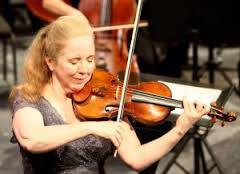 You’re slotted to play at a certain time but you don’t know and when they can stop you, so you segway from one work into another. Sometimes competition winners are bloodless. The pianists are very competent, with no emotion, and not easily rattled. However they’re not connected to the emotional content. That’s the difficult thing about competition; it’s very subjective.
You’re slotted to play at a certain time but you don’t know and when they can stop you, so you segway from one work into another. Sometimes competition winners are bloodless. The pianists are very competent, with no emotion, and not easily rattled. However they’re not connected to the emotional content. That’s the difficult thing about competition; it’s very subjective.
In Moscow I tried to focus on the music. I knew I needed to have some sort of diversion as well so I’d go to museums and on walks. I didn’t socialize with the other competitors. They would try to play mind games with you, trying to manipulate you. I was very careful who I spent any time with.
The competition also tabs kept on us, probably they were KGB. Every environment I was in, I knew was bugged so if you had to have a conversation, you went walking along the street. There was no privacy. Our belongings were searched and our conversations were monitored.
Were there certain musicians you admired at that time?
There were number of violinists I admired. I listened to Pavel Kogan, a Russian violinist; his technique was very sensitive. I was probably about twelve years old at the time. I was moved by a Glassonoff concert by Millstein; I was probably under twelve. I attended a lot of recitals at Town Hall and Carnegie Hall in New York City, and went to all the top classical concerts at that time.
You have an enormous interest in musicology and performance practice which is reflected in your own original cadenzas for concerti by Beethoven, Mozart, and Haydn. You are also a noted interpreter of Beethoven’s music, and the first violinist ever to record his “Violin Concerto,” featuring your own cadenzas on original instruments. And how did you come by the violin you play?
I got the violin I play by accident. I was asked in the mid-1980’s to play at a festival in Cape Cod for the pianist, Samuel Sanders. He was the top American collaborative pianist and had played with Itzhak Perlman. I would not have said he was a supporter of early instruments, yet he had invited Steven Lubin to play in his festival and had me play a Mozart symphony. I had never heard a 1742 violin with modern strings and a modern chin rest.
I remember listening to the articulation, the balance of the instrument. The character of the sound just from that experience intrigued me and it altered my way of playing Mozart. Our performance was recorded and I heard it, thinking “it sounds really good.”
Steven invited me to play at The Metropolitan Museum, and we ended up doing more of it. I borrowed bows that I needed to play on a Stradivarius violin. And that’s how I also met my husband.
Then Steven and I were invited to perform in Europe where I played an illustrative spring sonata by Beethoven; we also played at an all-Mozart concert. The violin I ended up buying was when I we had gone to Vienna. It’s a hybrid, and works really well as a classical instrument. I’ve done all my recordings on it and it has served me well. I feel very fortunate to have it.
I enjoy the chamber music experience, especially the collaborative relationships that developed. The rehearsal process can be delightful and the concerts can be rewarding. You must do as well as possible. You’re working on a collaborative interpretation, and when I played a Schubert quintet, depending who the collaborators are, it can be quite different.
My continuing education is getting ideas from other musicians, to hear what they have to say, how something sounds, learning ideas about articulation. I try to get as much as I can from as many players as I can.
From 2007 to 2011, you programmed and hosted a “Music and Imagination” course at the Philoctetes Center in New York. You’re also currently a Professor of Violin at the Steinhardt School of Culture, Education, and Human Development at New York University and you also frequently hold master classes.
To teach well you have to understand technique and also not be too rigid. Certain students when I taught at NYU were very intelligent, and many students everywhere I go are most advanced in understanding technique and how it works.
I want to see a student respond to the different sounds, how one creates these sounds and the imagination that’s required. You also have to have a certain personality to be a violinist, and a self-sufficiency. Some of the students have it, many don’t.
My feeling about teaching is more on the technical basis: what you want it to sound like and where you are now plus what you have to do to get where you want to go. A lot of it is problem-solving. There might be something that feels difficult in terms of playing an instrument, and it may be a matter of transition, going from the lower register on the instrument to the higher. It’s about recognizing it’s important to ask: How do I train myself?
How did you develop your ideas in physicality of music?
I began to read about it, discovering ancient ideas, discovering the portions of the perfect octave. The idea as music is something tangible. It’s illusive but ultimately you can describe these properties as elliptical. Kepler and Galileo and Vincenzo did it through practical applications based on the stars.
How did you develop your particular style of playing?
Grumiaux thought my wrist was too tense. That was the only physical correction he meant for me to work on.
When we watch we generally focus on the left hand playing of the violin. It’s mesmerizing. It’s also actually quite straight forward. It’s the bowing which gives us our expression, the musical line. I actually work on the bowing much more to connect the audience with the music.
You’re working with gravity. Everything boils down to keeping the elbows are down because then you’re relaxed.
It lends itself to a more physically-relaxed way of playing, and you can play much longer. You’re also working with adrenalin. You’re trying to control it and you also have to have confidence. It’s a mental activity, a very physical action.
Everything is trained together. I imagine it’s the same with acting. It’s important to arrive at the best set of fingering and bowing. You train yourself to put all these motions together; it becomes part of what you’re doing.
When I play a piece by memory there’s a sense of narrative. You’re on a path and there are other paths along the way and you’re being pulled along to the end.
What kind of courage does it take to perform the way you do?
You have to believe in what you’re doing, even if you change the interpretation, even if you play concert after concert. It’s never perfect. It’s never complete; it’s genuinely a process; always changing. It’s really putting yourself out there to say: This is what I believe in. You might change your ideas later, but at the moment this is how you believe the piece goes.
It’s also about overcoming the physicality involved. It can be very difficult when the concert hall doesn’t offer the right sounds; it’s not as rewarding. It can feel like a struggle making the sound you want to make. Partly it also comes from experience. You learn to feel when something is not quite right or when it’s just right.
One goes from learning something to figuring out what the basic notes are, the tempo, how to use the bow – then through the process of putting it all together – creating the feeling inside – being very objective. Being self-critical can be a good thing; it can also be terrible.
I work a lot with a metronome to make sure I’m staying in the same tempo. I listen to recordings. I also have a specific process when I go into performance. To get into this confident position, I have to have the confidence to get rid of the cobwebs, the insecurities of “thinking too early in the process, or thinking “this passage is difficult.”
You have to be ‘in the moment’ and allow the moment to be spontaneous; to play with the trust of what the conductor can do for you, while also allowing the sense of play that occurs in the moment.
I let go during a performance, to not feel distracted, to put everything into perspective. What’s wonderful is having something that’s your own and you’re bringing this great art to life. It can be a contemporary piece or Bach. Isn’t it astounding how this music came out of a human being like Mozart or Schuman?
How do you prepare before a performance?
I generally try and have a rehearsal. If I don’t have a rehearsal, I’ll practice myself. I try not to think too much about the piece, to not practice too much. To know everything has been taken care of.
To relax, I might take a nap. I watch what I eat. I do a warm-up. I usually play about 120 minutes before I go out on stage. If I practice too much it can make me tired. I find there’s a feeling starting to happen, an alertness comes. I warm up getting into the focus of the evening. I don’t feel apprehensive once I get into the ‘zone for playing.’
When I’m on stage it’s like I’m “disembodied” – the playing takes me over. I can be playing so deeply that such a deep current comes, I feel like I’m not even there.•







































